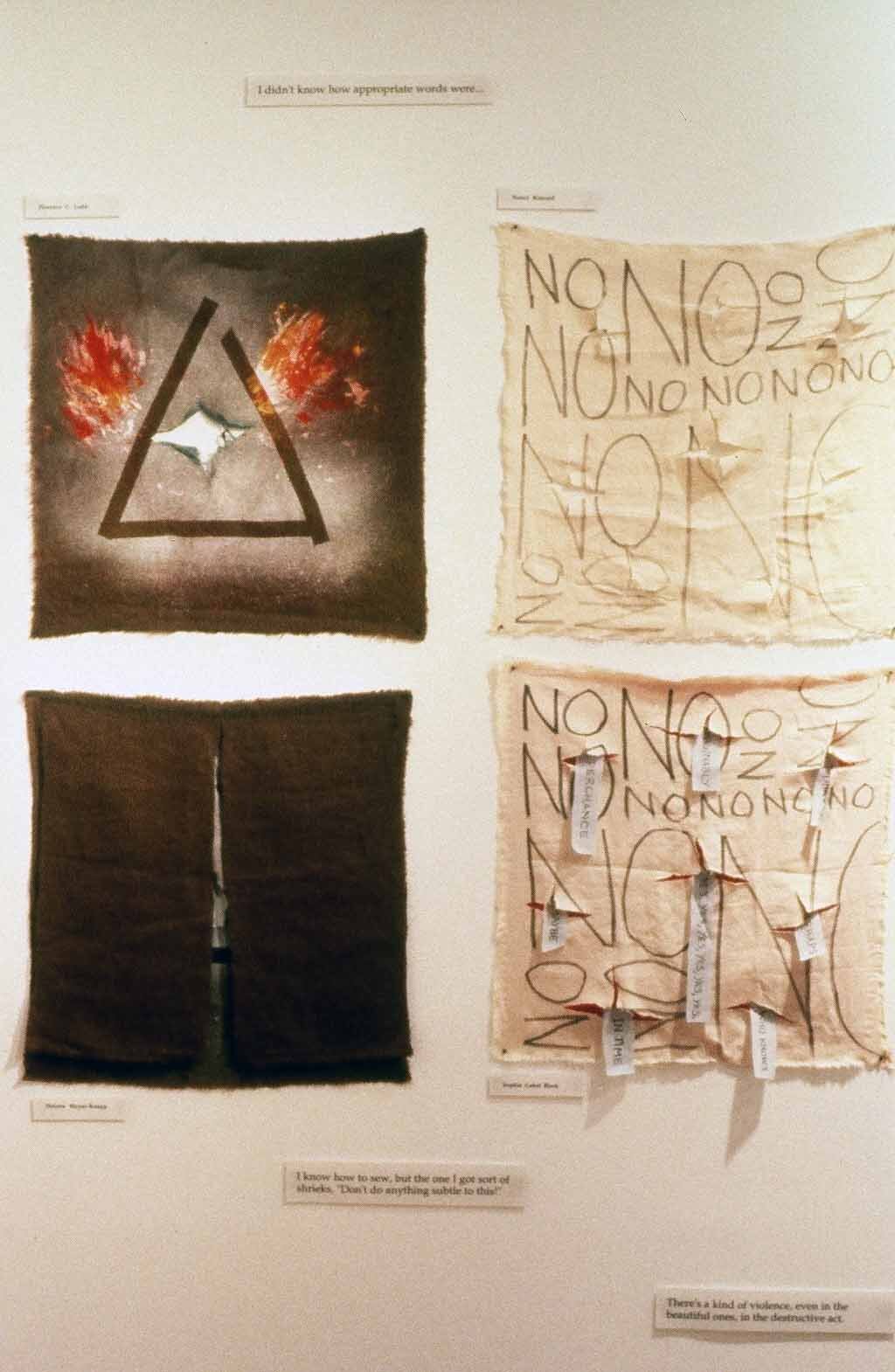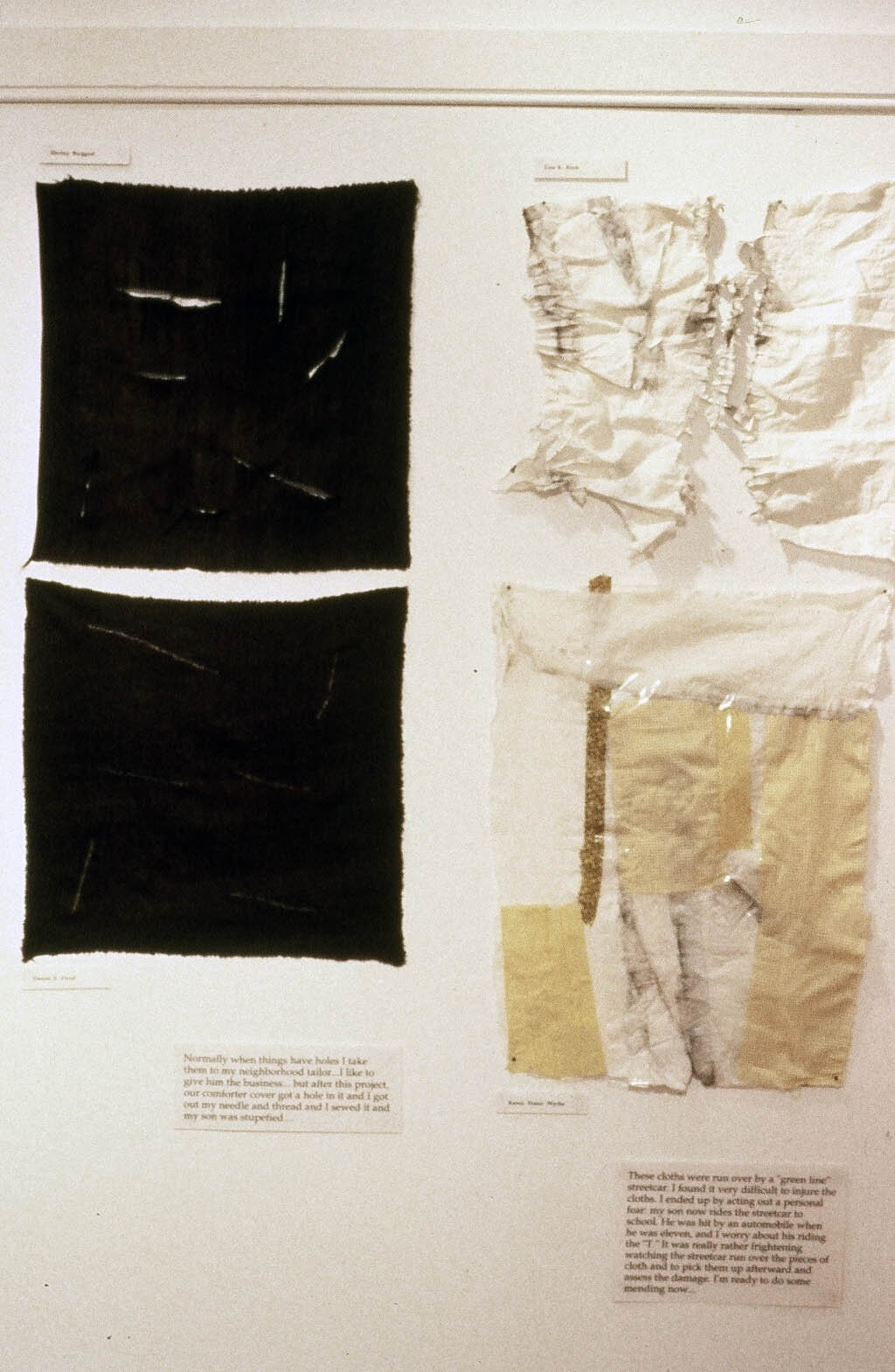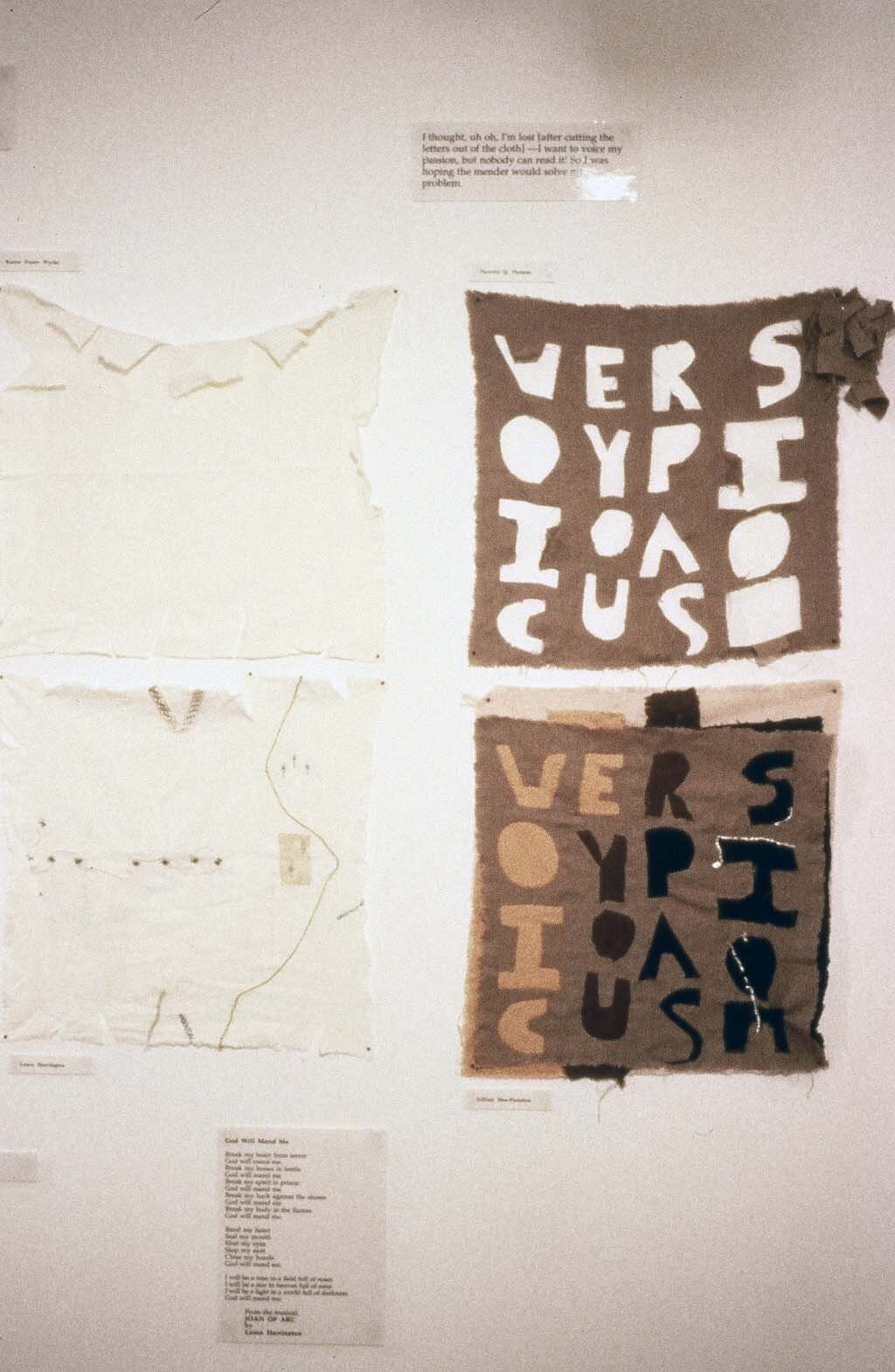The Mending Project
42-person collaborative project with sister-fellows at the Radcliffe Institute for Advanced Study
Linen, cotton, mixed media
84 cloth panels, each 18”x18”
1994-95



The Mending Project took place while I was a sister-fellow at the Mary Ingraham Bunting Institute at Radcliffe (now called the Radcliffe Institute for Advanced Study). Women from a wide range of disciplines and geographic locations were given workspace and one year of funding to pursue their own projects. I conceived The Mending Project to explore the literal and metaphoric meanings of mending for three generations represented in this group of women.
To each of the forty-two participants I distributed two 18”x18” squares of cloth and instructions for the project. I used a variety of plain cotton and linen in different shades of white, brown, and tan. First, the participants were directed to destroy both cloths in some way and then return both to me. I took one of each pair and redistributed them anonymously among the group, so that each participant received the square of cloth that had been “destroyed” by someone else. Second, the participants were instructed to mend the damaged cloth they had received. Interpretation of the words “destroy” and “mend” were left to the individuals. In the end, all original pairs were exhibited – the destroyed and the mended, along with commentary by the participants.
The methods of “destruction” were varied and included placing the cloth on the Green Line subway track to be run over, placing and burning the cloth on an electric stove to create the pattern of the coils, or cutting and tearing in patterns or at random. The mending rarely fixed all the damage and employed a variety of words and materials including tape, lace, and other cloth, words written on the cloth, Band-aids, colorful stitching, and paint.
For the youngest among us, mending was not something they ever thought about. If clothing ripped, you got rid of it. For the middle generation there was both the memory of mothers who darned socks or mended shirts as well as the struggle to free ourselves from the tyranny of female-assigned domestic duties, while recognizing the thrift of mending and in some cases still using our needle skills, because it made ecological and economic sense. The eldest generation among us seemed to have been pushed less to question the practice, not having loaded up the modest activity with cultural meaning. There were those who felt women were always called upon to mend relationships and emotional wounds and were weary of the responsibility.
The Mending Project inspired conversation, poetry, and a song. Many of the women lived professional lives as academics, and using their hands to work with cloth and other materials tapped an expressive place within themselves that did not often find a medium. The Mending Project also made clear that, whether one is talking about a pair of pants or a pair of personalities, women are, more often than not, the menders. We do not always a welcome the role, but we have been trained to excel, or at least be the one to try.